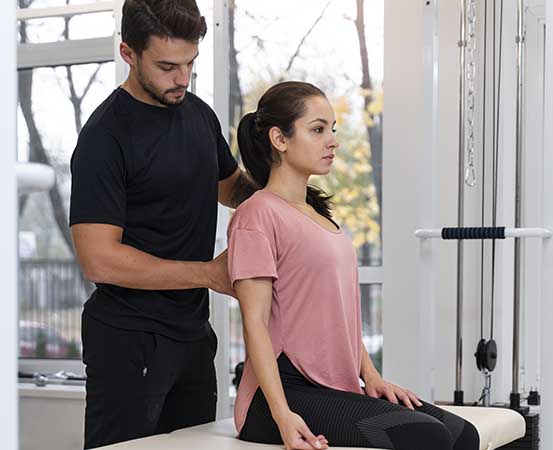
Massage is a popular alternative therapy for treating pain. Be it any pain — from headaches and muscle spasms to back and leg pain — a therapeutic massage, more often than not, offers the solution. There are several types of massages that are in practice across the world, with their technique, application, medications or oils used, etc., varying with the regions and cultures from where they originate. However, regardless of the differences, they all serve the same purpose — to make one feel relaxed and relieve or alleviate pain.
Common practices of massage therapy
Massages have been practiced for thousands of years by Ayurvedic specialists, alternative therapy practitioners and physiotherapists for managing health conditions. Even infant massages, utilized in many cultures, are known to be beneficial.
“Massages involve manipulating the soft tissues of the body,” says Pooja Pandey Tripathi, a physiotherapist from Bangalore. “Therapeutic massage helps manage your health conditions and relieve pain in the long run.”
A common practice is to apply oils and lotions to the skin while massaging. “Massaging on dry skin can cause skin damage,” says Shri Prabhulal Babu Devar, a Siddha practitioner and therapist from Hosur, Tamil Nadu. “Using oils, powders, Vaseline and petroleum jelly allows for a smooth massage.”
Various techniques of massage therapy
There are numerous massaging techniques, making it important to assess one’s medical history before deciding on a particular type. “The types include deep tissue massage therapy, superficial massage therapy, sports massage therapy, etc.,” says Mahesh Gandikota, physiotherapist at Ishas Physiotherapy and Spine Care Clinic, Bangalore. “For people in extreme pain, we recommend gentle superficial massage and not deep tissue massages.”
In addition, the strokes employed vary as well. “While massaging, we use different hand techniques like effleurage [circular stroking movements], kneading [compressing soft tissues in a circular motion using the elbow, palm or knuckle] and tapping,” adds Gandikota. “The friction during the massage generates heat and causes vasodilation [widening of blood vessels], enabling better circulation of lymph and blood, which induces relaxation.”
How do massages relieve pain?
The muscles relax during a massage, reducing stiffness and increasing blood circulation along with the supply of oxygen and nutrients. “Besides improving flexibility and range of motion, it also decreases muscle tension and spasms, leading to pain relief,” says Tripathi. “Moreover, there is stimulation of the large nerve fibers, which override the small nerve fibers that carry the pain signals to the brain. This reduces the perception of pain.”
Devar adds, “When you’re applying external force to the muscles, the increased blood circulation reduces any type of swelling and pain associated with it.”
Massages aid in stress management
Pain, at times, can be associated with stress. Both stress and pain get in the way of a good sleep cycle and the body’s healing process. Massages, especially foot massages, help with insomnia and stress. “Massage triggers the release of endorphins — the body’s natural painkiller that helps reduce pain — and promotes a sense of well-being. With a therapeutic massage, stress and anxiety are reduced, and you start feeling better, both mentally and physically,” says Tripathi.
Varied benefits of massage therapy
“Pain associated with certain muscle disorders, inflammation in the body, swelling and joint aches can be treated with massage therapy. It’s also good for people with insomnia and paralysis,” says Devar. Additionally, research has shown massage therapy to be beneficial in managing and treating various skin conditions and pain syndromes like arthritis, fibromyalgia, hypertension, etc.
Limitations of massage therapy
Certain types of massages involve the application of pressure or force on the muscles, which can aggravate the existing pain. Hence, it’s not suitable for all ailments and every individual. “Massages cannot be performed on people with deep vein thrombosis and severe osteoporosis,” says Tripathi.
It is also not suitable for people prone to skin allergies, as they could develop rashes. In addition, massage therapy immediately after a meal is also not recommended. “There are certain side effects like dehydration, fatigue, dizziness or a mild feeling of nausea, which are short-lived. There is no consistency in the results or benefits either. If massage therapy is successful for an individual with a specific condition, it doesn’t mean that it will work for someone else the same way,” explains Tripathi.
Takeaways
- Massages involve manipulating the soft tissues of the body, which helps manage several health conditions.
- Using lubrication such as oils, lotions, etc., during a massage prevents the skin from being damaged.
- Massage triggers the release of endorphins, reduces pain perception and relieves stress and anxiety, ultimately offering relief from pain.
- Massages cannot be performed on individuals who have severe pain, skin allergies or other health issues like deep vein thrombosis, severe osteoporosis, cuts, burn injuries, etc.

















